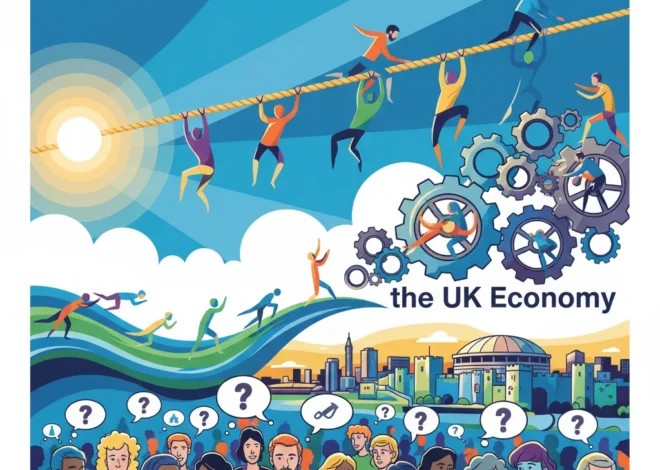
Beyond the Headlines: How the UK’s Latest Budget Reshapes the Financial Future for Gen Z
The Chancellor’s Gambit: Decoding the Real-World Impact on Young Professionals and Investors
Another budget season has come and gone, leaving a flurry of headlines, political soundbites, and complex fiscal jargon in its wake. For many, the Chancellor’s speech is background noise—a high-level affair concerning the grand machinery of the state. But buried within the spreadsheets and policy documents are critical changes that will directly shape the financial realities of the UK’s younger generation. For those under 25, navigating the early stages of their careers, grappling with student debt, and dreaming of homeownership, these measures are anything but abstract.
This analysis moves beyond the surface-level summaries to dissect the tangible impacts of the budget on young people’s wallets, their capacity for investing, and their long-term financial strategies. We will explore the immediate gains from tax cuts, the subtle erosion of those benefits through fiscal drag, and the new opportunities—and potential pitfalls—emerging in the savings and investment landscape. This isn’t just about a few extra pounds in your payslip; it’s about understanding the shifting economic currents that will define the next decade for Gen Z in the UK.
The Headline Win: A Closer Look at the National Insurance Cut
The most celebrated measure for workers was the further 2p cut to National Insurance Contributions (NICs), reducing the main rate for employees from 10% to 8%. On the surface, this is an unequivocal win, putting more money directly into the pockets of millions. For a young professional just starting their career, this boost in take-home pay can be significant, potentially easing the pressure of rising living costs or creating a small surplus for saving or investing.
However, a professional analysis requires looking at the complete picture. This tax cut operates within a broader context of frozen income tax thresholds, a phenomenon known as “fiscal drag.” As wages rise with inflation, more individuals are pulled into higher tax brackets, and a larger portion of their income is taxed at the basic rate. According to the Office for Budget Responsibility (OBR), the freeze on personal tax thresholds is expected to create millions of new taxpayers by 2028-29. This means that while the NI cut provides immediate relief, some of that gain is quietly clawed back by the Treasury over time.
To illustrate the immediate, tangible effect of the NI cut, let’s examine the numbers for typical salary bands for young professionals.
| Annual Salary | Approximate Annual NI Savings | What This Could Fund |
|---|---|---|
| £25,000 | £249 | A yearly subscription to a trading platform |
| £35,000 | £449 | A significant contribution to a Stocks & Shares ISA |
| £45,000 | £649 | Initial capital for exploring the stock market |
| £50,270 (Higher Rate Threshold) | £754 | Maxing out a specific investment goal |
While the savings are real, the challenge for young people is to channel this extra cash effectively. The world of fintech offers countless tools, from automated savings apps to micro-investing platforms, that can help turn these modest monthly gains into substantial long-term wealth. The key is discipline and a clear financial plan.
The Summers-Epstein Nexus: A Sobering Lesson in Reputational Risk for Finance and Leadership
Rethinking Savings: The “UK ISA” and the Future of Investing
One of the most talked-about proposals was the consultation for a “UK ISA,” a new tax-free savings account with an additional £5,000 allowance specifically for investing in UK-listed equities. This move is designed to stimulate the domestic stock market and encourage a culture of “patriotic investing.”
For a young investor, this presents both an opportunity and a dilemma. On one hand, an extra £5,000 of tax-free allowance is an attractive prospect. On the other, it encourages a “home bias”—a portfolio heavily weighted towards a single country’s economy. Sound investment strategy, as championed by financial advisors and seasoned traders, almost always emphasizes global diversification to mitigate risk. The UK market represents only a small fraction of the global stock market, and concentrating investments there could mean missing out on growth from dynamic sectors in the US or Asia.
This policy also raises questions about the future of the UK’s financial technology sector. Will fintech platforms and digital wealth managers be quick to offer this new product? And how will they educate their young user base on the risks of a non-diversified portfolio? This is a critical juncture where government policy and market innovation intersect, with the young investor caught in the middle. The success of the UK ISA will depend heavily on the performance of the London Stock Exchange and whether it can truly offer compelling returns compared to global alternatives.
The Epstein Files Unsealed: A Black Swan Event for Wall Street and the Global Economy?
Lifestyle Levies: The Economic Logic of “Sin Taxes”
The budget also introduced measures that directly impact the day-to-day spending of young people, most notably a new excise duty on vaping products from October 2026. This is a classic “sin tax,” designed to achieve two goals: raise revenue for the Exchequer and discourage a specific behaviour deemed unhealthy. A simultaneous one-off increase in tobacco duty will also be implemented to ensure that vaping remains a cheaper—and thus more attractive—alternative to smoking (source).
From an economics perspective, the effectiveness of such taxes depends on the “price elasticity of demand.” If demand is inelastic (meaning consumers will buy the product regardless of price), the tax primarily serves as a revenue generator. If demand is elastic, the price hike will significantly reduce consumption. For many young people, vaping is a significant monthly expense, and this new tax will force a financial reckoning, potentially encouraging them to quit or cut back, thereby freeing up more income for other financial goals.
The Macro-Economic Backdrop: Implications for Jobs, Growth, and Technology
No personal finance decision exists in a vacuum. The budget’s individual measures are set against a backdrop of the OBR’s forecasts for the wider UK economy. The outlook is one of sluggish growth, with inflation projected to fall below the 2% target later this year according to recent reports. What does this mean for someone under 25?
A low-growth environment can translate to a more competitive job market and slower wage progression. However, falling inflation could lead the Bank of England to cut interest rates, which would reduce the cost of borrowing for mortgages and other loans—a critical factor for young people’s long-term aspirations. This interplay between fiscal policy (the budget) and monetary policy (interest rates) is central to the nation’s financial health.
Furthermore, the health of the UK economy is paramount for its burgeoning fintech and technology sectors, which are major employers of young, skilled graduates. The budget’s broader signals about business investment and innovation are therefore crucial. While there were no blockbuster announcements for the tech world, the stability (or lack thereof) signaled by the budget has a ripple effect on venture capital funding, startup creation, and the availability of high-value jobs. The lack of any new, clear regulatory framework for emerging technologies like blockchain and digital assets was a notable omission, leaving a degree of uncertainty for one of the most innovative corners of the financial services industry.
The Billion Question: Who Audits OpenAI, and Why Does It Matter to Your Portfolio?
Actionable Takeaways for the Under-25 Investor
So, what should a young person do in response to this budget? The answer lies in proactive financial management.
- Recalibrate Your Budget: Use the NI cut as an opportunity. Don’t let the extra cash disappear into lifestyle inflation. Instead, automatically divert that specific amount each month into a savings or investment account.
- Maximise Your ISA: Regardless of the proposed UK ISA, the existing £20,000 annual allowance across all ISA types is one of the most powerful wealth-building tools available. Prioritise maxing this out before considering other investments.
- Stay Informed, Think Globally: While the UK ISA may be tempting, maintain a globally diversified portfolio. Use low-cost ETFs and index funds available on most trading platforms to spread your risk across different geographies and sectors.
- Embrace Financial Technology: Leverage fintech tools to automate your finances. Set up direct debits to your investment accounts, use apps to track spending, and explore digital banking features that can help you manage your money more effectively.
Ultimately, this budget presents a mixed bag for the under-25s. The immediate tax relief is welcome, but it’s a small part of a much larger and more complex financial puzzle. True financial empowerment will come not from government handouts, but from financial literacy, disciplined planning, and a strategic approach to navigating the ever-changing landscape of the modern economy.


